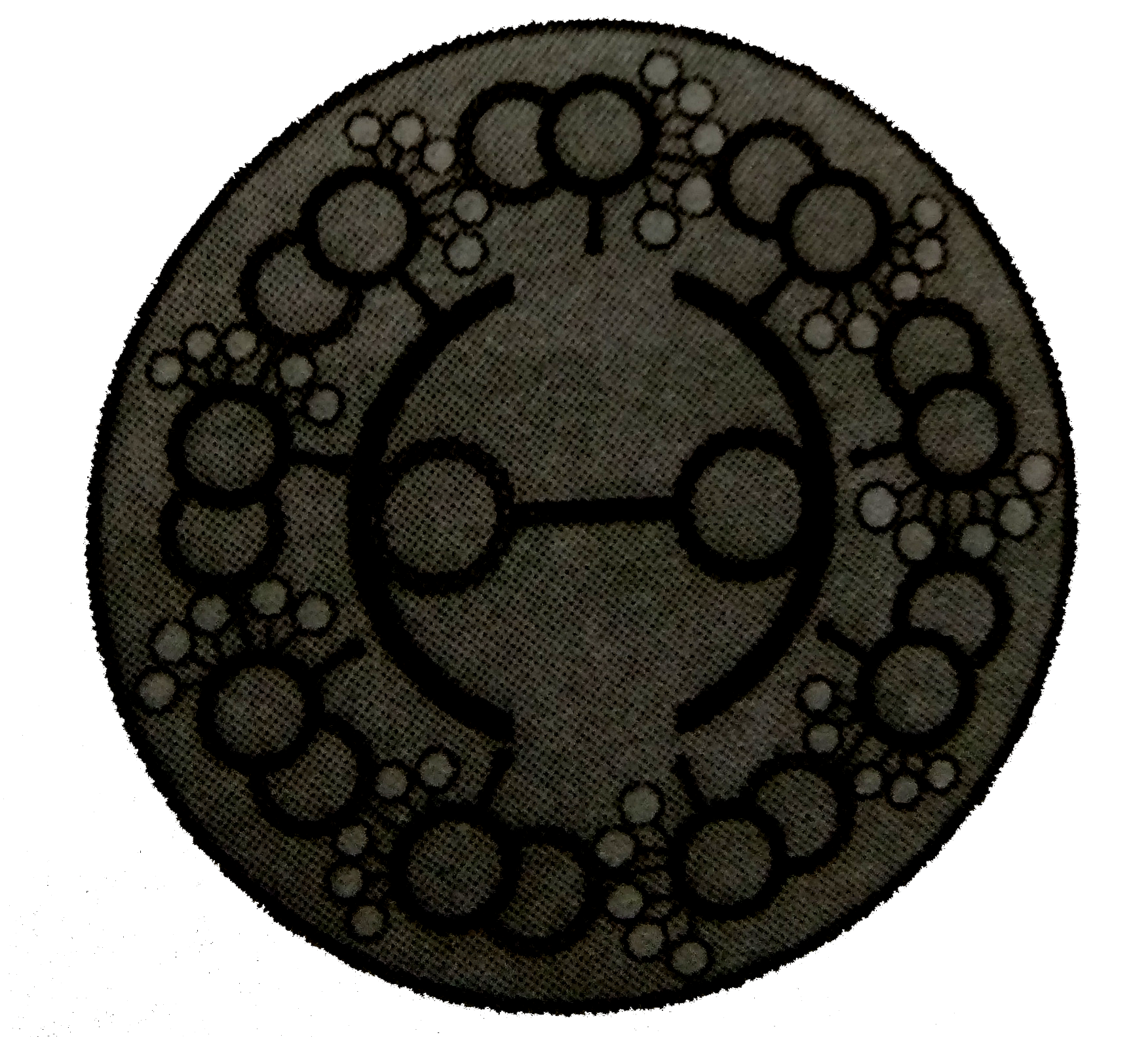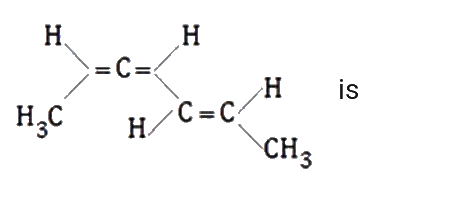Which is correct for the structure of diborane ?
It contains four (2c,2e) covalent bonds and two (3c,2e) covalent bonds.
It contains three (2c,2e) covalent bonds and three (3c,2e) covalent bonds.
It contains two (2c,2e) covalent bonds and four (3c,2e) covalent bond.
It contains six (2c,2e) covalent bonds.
The correct Answer is:A
To determine the correct structure of diborane (B2H6), we need to analyze its bonding characteristics. Here’s a step-by-step breakdown of the solution:
Step 1: Understand the Electron Configuration of Boron
- Boron has an atomic number of 5, which gives it the electron configuration of 1s² 2s² 2p¹.
- In its ground state, boron has three valence electrons (2 in the 2s orbital and 1 in the 2p orbital).
Hint: Remember that the number of valence electrons is crucial for understanding how atoms bond.
Step 2: Formation of Boron Hydride (BH3)
- Boron can form a compound with three hydrogen atoms, resulting in boron trihydride (BH3).
- In BH3, boron is electron-deficient, meaning it does not have a complete octet.
Hint: Electron deficiency in boron leads to the formation of additional bonds to stabilize the molecule.
Step 3: Dimerization to Form Diborane (B2H6)
- To stabilize itself, two BH3 units combine to form diborane (B2H6).
- This dimerization involves the sharing of hydrogen atoms between the two boron atoms.
Hint: Look for how atoms share electrons to form stable structures.
Step 4: Identify the Types of Bonds in Diborane
- In diborane, there are two types of bonds:
1. Two-center, two-electron bonds (2c-2e bonds): These are formed between a boron atom and a hydrogen atom. Each bond involves the sharing of one electron from boron and one from hydrogen.
2. Three-center, two-electron bonds (3c-2e bonds): These bonds involve two boron atoms and one hydrogen atom. Here, the bond is formed by sharing electrons from one boron and one hydrogen, while the other boron does not contribute an electron.
Hint: Count the number of bonds carefully and note how many atoms are involved in each bond type.
Step 5: Count the Bonds
- In diborane, there are:
- 4 two-center, two-electron bonds (B-H bonds).
- 2 three-center, two-electron bonds (the bonds involving the two boron atoms and the shared hydrogen).
Hint: Visualizing the structure can help in counting the bonds accurately.
Conclusion
- Therefore, the correct statement regarding the structure of diborane is that it contains 4 two-center, two-electron bonds and 2 three-center, two-electron bonds.
Final Answer: The correct option is A: 4 two-center, two-electron bonds and 2 three-center, two-electron bonds are present in diborane.
- Boron has an atomic number of 5, which gives it the electron configuration of 1s² 2s² 2p¹.
- In its ground state, boron has three valence electrons (2 in the 2s orbital and 1 in the 2p orbital).
- Boron can form a compound with three hydrogen atoms, resulting in boron trihydride (BH3).
- In BH3, boron is electron-deficient, meaning it does not have a complete octet.
- To stabilize itself, two BH3 units combine to form diborane (B2H6).
- This dimerization involves the sharing of hydrogen atoms between the two boron atoms.
- In diborane, there are two types of bonds:
1. Two-center, two-electron bonds (2c-2e bonds): These are formed between a boron atom and a hydrogen atom. Each bond involves the sharing of one electron from boron and one from hydrogen.
2. Three-center, two-electron bonds (3c-2e bonds): These bonds involve two boron atoms and one hydrogen atom. Here, the bond is formed by sharing electrons from one boron and one hydrogen, while the other boron does not contribute an electron.
- In diborane, there are:
- 4 two-center, two-electron bonds (B-H bonds).
- 2 three-center, two-electron bonds (the bonds involving the two boron atoms and the shared hydrogen).
- Therefore, the correct statement regarding the structure of diborane is that it contains 4 two-center, two-electron bonds and 2 three-center, two-electron bonds.
Topper's Solved these Questions
- P-BLOCK GROUP 13 - BORON FAMILYBOOK - CENGAGE CHEMISTRY ENGLISHCHAPTER - P-BLOCK GROUP 13 - BORON FAMILYEXERCISE - Exercise (Assertion-Reasoning)
13 Videos
- P-BLOCK GROUP 13 - BORON FAMILYBOOK - CENGAGE CHEMISTRY ENGLISHCHAPTER - P-BLOCK GROUP 13 - BORON FAMILYEXERCISE - Exercise (Integer)
9 Videos
- P-BLOCK GROUP 13 - BORON FAMILYBOOK - CENGAGE CHEMISTRY ENGLISHCHAPTER - P-BLOCK GROUP 13 - BORON FAMILYEXERCISE - Exercise (Multiple Correct)
23 Videos
- ORGANIC REACTION MECHANISMBOOK - CENGAGE CHEMISTRY ENGLISHCHAPTER - ORGANIC REACTION MECHANISMEXERCISE - Analytical and Descriptive
6 Videos
- P-BLOCK GROUP 14 - CARBON FAMILYBOOK - CENGAGE CHEMISTRY ENGLISHCHAPTER - P-BLOCK GROUP 14 - CARBON FAMILYEXERCISE - Exercises Archives (Subjective)
9 Videos
Similar Questions
Knowledge Check
In the structure of diborane,
Aall hydrogen lie in one plane and boron atoms lie in a plane perpendicular to this planeB2 boron atoms and 4 terminal hydrogen atoms lie in the perpendicular planeC4 bridging hydrogen atoms and boron atoms lie in one plane and two terminal hydrogen atoms lie in a plane perpendicular to this planeDall the atoms are in the same plane.In diborane
AFour bridged hydrogen atoms and two terminal hydrogen atoms are presentBTwo bridged hydrogen atoms and four terminal hydrogen atoms are presentCthree bridged hydrogen atoms and three terminal hydrogen atoms are presentDthere are no bridged hydrogen atoms in diborane, only hydrogen bonds are present.Which of the following is correct for the given structure ?
 AThese are small structures which work like oars.BIt is covered with plasma membrane.CIts core is called axoneme.DAll of these
AThese are small structures which work like oars.BIt is covered with plasma membrane.CIts core is called axoneme.DAll of these
Which of the following option is correct regarding the structure of borax?
View SolutionThe correct name of the structure

View SolutionWhich is the correct structure of Nylon-6
View SolutionWhich is correct structure of β−D-glucopyranose.
View SolutionWhich of the following is correct regarding the structure of a section of cilia / flagella ?
View Solution
